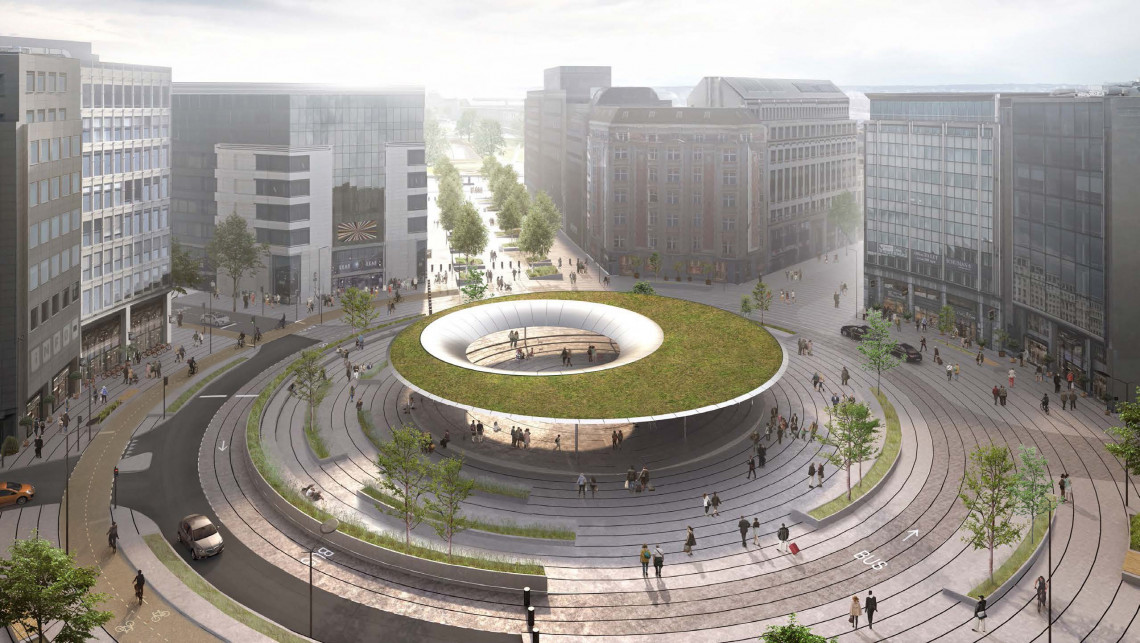The long-anticipated renovation of the hectic, car-heavy Schuman roundabout in the European Quarter will soon begin. But what will it actually look like once the works are finalised?
Currently, the Schuman roundabout at the foot of the Parc du Cinquantenaire is dominated by traffic.
Crossing it can be an uncomfortable experience for pedestrians and even dangerous for cyclists, as the cycling path crosses over several lanes, forcing them to be wedged in between cars.
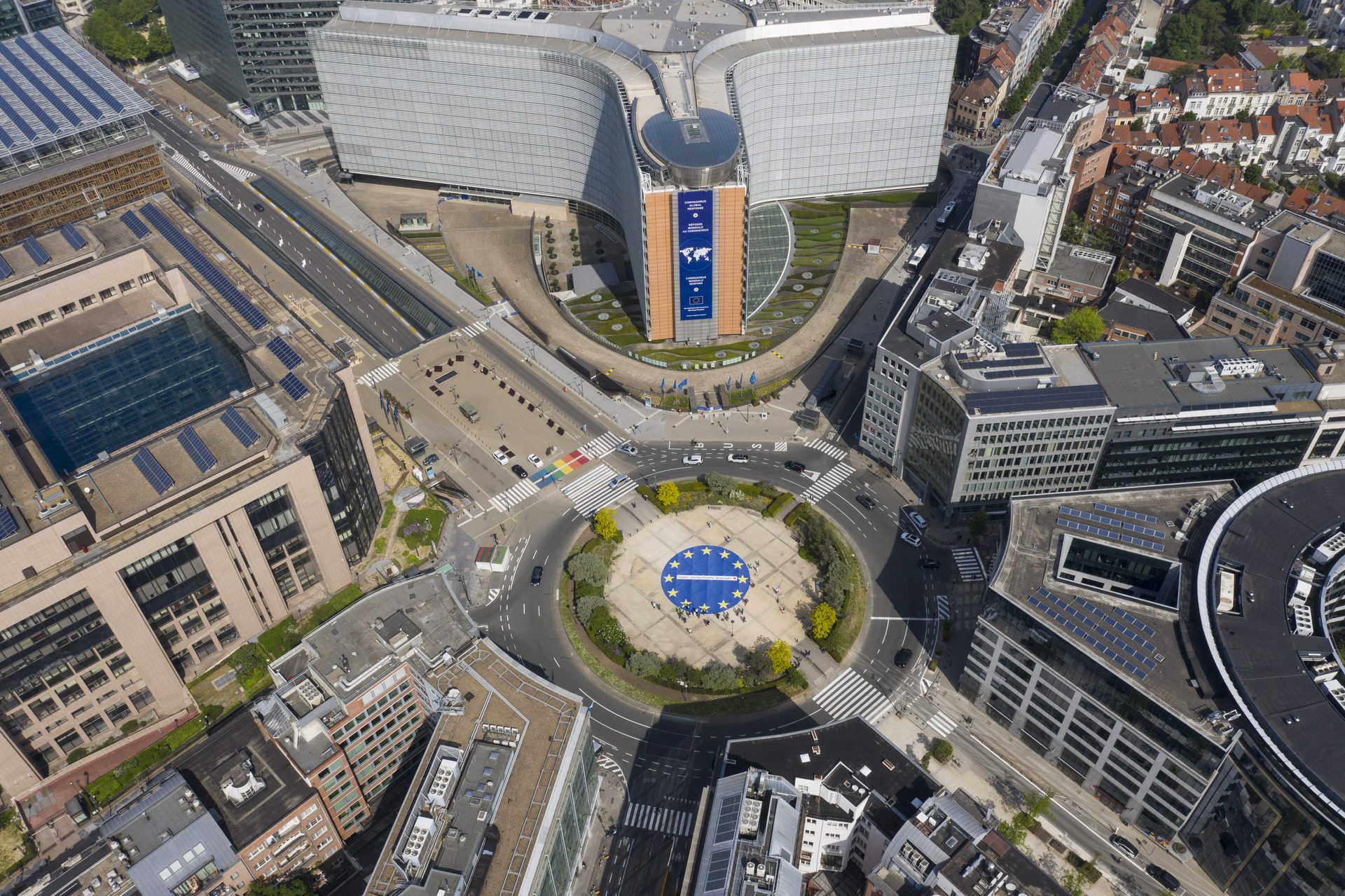
The roundabout is currently very car-heavy. Credit: Belga
However, redevelopment works will soon start for a facade to facade reconstruction of this emblematic square in the heart of the European district of Brussels, which will turn it into a safe multi-use space.
Bowl-shaped space
The aim is to give the roundabout in the heart of the European Quarter a new face and make it a "real meeting place for Brussels residents, the public of the EU institutions and tourists."
The overall philosophy for the design of the €25 million project, submitted by Danish architectural firms COBE and Brussels BRUT, reflects Schuman's central location, as it creates one circular space around which traffic is routed in concentric circles, encouraging visitors to meet in the centre.
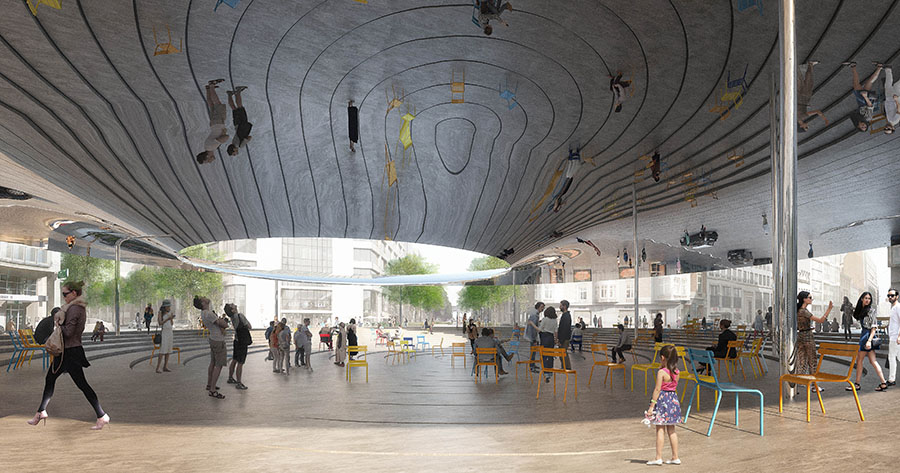
The project aims to make the roundabout a real meeting place for Brussels residents. Credit: Beliris
The most striking aspect of the plans – and in some ways most contested by locals – is the canopy, a modern steel "bowl-shaped space" with a green roof which will be located at the centre of the roundabout, and is hoped to become a space where a wide range of events can take place.
The inner roof of the structure will reflect the ground and people below.
Pedestrians and cyclists first
A large pedestrian zone will encircle the roundabout, which will alter the traffic situation for car drivers, as most of the square will be reserved for pedestrians and cyclists.
The section of Rue de la Loi between Parc du Cinquantenaire and the new Schuman "square" will become a green pedestrian zone. Meanwhile, a safer and more visible cycle path will be added along the roundabout and on both sides of Rue de la Loi.
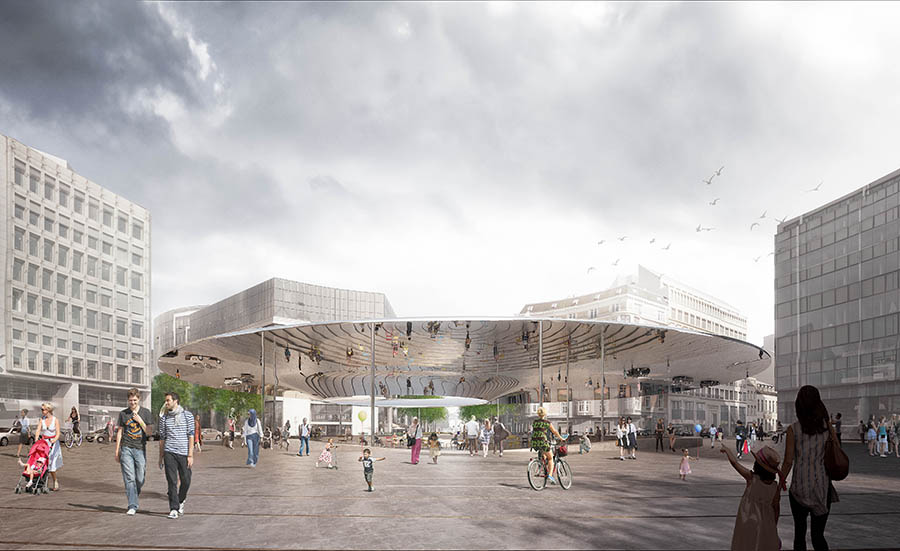
The pedestrian space at the centre of the roundabout will be much larger than it is now. Credit: Beliris
Car traffic between Avenue de Cortenbergh and Rue de la Loi will continue but be limited at the intersection between these two major roads to give pedestrians and cyclists more space.
Works were due to begin at the end of this summer, however, they will now start slightly later than expected, Beliris' spokesperson Elien De Swaef told The Brussels Times, as the new permit has not yet been granted.
Delayed kick-off
The previous permit for this project had been granted in 2021, but the municipality of Etterbeek and several neighbourhood committees lodged an appeal against the building permit with the Council of State.
They criticised the proposed one-way traffic system in the Avenue de la Joyeuse Entrée, which they argued would cause major traffic congestion.
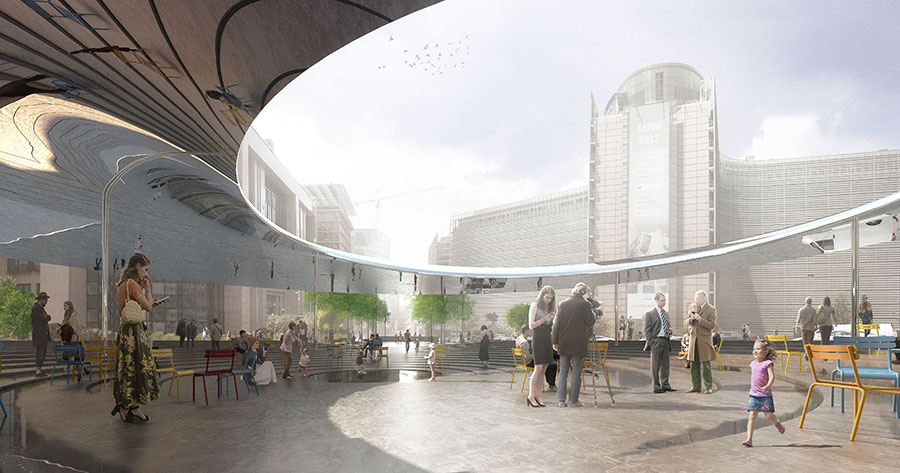
The opening inside the metal canopy, looking at the Berlaymont building. Credit: Beliris
As it was unclear how long it would deliberate on the matter, talks were held between Beliris, Etterbeek, Brussels Mobility and the region to allow a new permit to be issued, taking into account these complaints. An agreement was reached, and the new plans now ensure that the road will remain two-way.
Another public enquiry is now underway, and once the new plans have been given a permit, they will replace the old ones. "But Beliris has been preparing to start the works as soon as possible after receiving the permit. The renovation would take about two years," De Swaef said.

